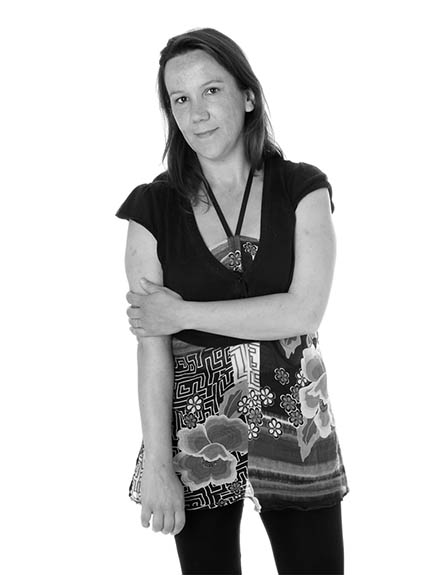| marie-hélène le ny |
|
photographist |

|
“I am interested in micro-organisms which live in rocks, a world of extremophiles where temperature, pressure and pH conditions are hostile. I analyse them using a synchrotron and spectroscopy in collaboration with biologists who look at their DNA. I work on rocks in the oceanic crust which form the bottom of the oceans and in particular rocks in the earth's mantle, called peridotites. When they come into contact with the sea water which percolates through numerous faults and fractures caused by plate tectonics, chemical reactions occur between this water – which has become a hydrothermal fluid by gradually becoming heated and charged in elements which made up the rock – and the minerals, transforming the rock into serpentinite. Destabilised and oxidised, serpentinites produce hydrogen and other organic compounds, which are interesting from the point of view of the development of living things.
I recently took part in an expedition out at sea to collect serpentinites along the Southwest Indian Ridge. We collected rocks to study the minerals and micro-organisms contained in them. The first kilometres of the oceanic crust are now known as a microbial habitat and the living creature is therefore one component of the system that needs to be well understood – particularly if we envisage storing CO2 there. In a pilot site in Iceland where CO2 is injected, we first made an inventory of the microbial communities which were living in the basalt at a depth of several hundred metres and then monitored their evolution after the CO2 was injected. To be certain that these stores are reliable, we are trying to understand the influence of this life at depth on the future of CO2. Some species may have an important effect in terms of greenhouse gas production or CO2 mineralisation." |
||
|
Bénédicte
Ménez University Professor, IPG de Paris, University Paris Diderot |
|||
|
|
|
|